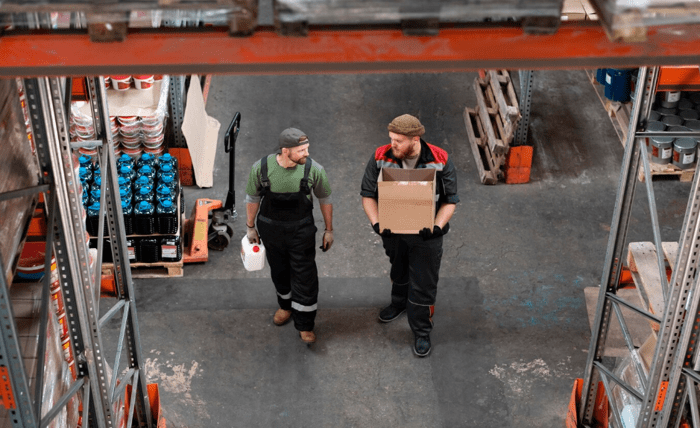Warehouses are bustling hubs of activity, where goods are stored, sorted, and shipped. The dynamic nature of these environments, combined with the heavy machinery and large volumes of inventory, creates a landscape rife with potential hazards. Safety in warehouses is not merely a regulatory requirement; it is a fundamental aspect of operational efficiency and employee well-being.
A safe warehouse environment minimizes the risk of accidents, which can lead to severe injuries, costly downtime, and even legal repercussions. The importance of safety cannot be overstated, as it directly impacts employee morale, productivity, and the overall reputation of the organization. In addition to protecting employees, a strong safety culture within a warehouse can lead to significant financial benefits.
Companies that prioritize safety often experience lower insurance premiums, reduced workers’ compensation claims, and fewer disruptions in operations. Furthermore, a commitment to safety can enhance employee retention and attract top talent, as workers are increasingly seeking employers who value their health and well-being. By fostering a culture of safety, organizations not only comply with legal standards but also create an environment where employees feel valued and secure, ultimately leading to improved performance and profitability.
The Role of Mats in Preventing Accidents and Injuries
High-Risk Zones
docks, walkways, and areas near machinery are often prone to spills or debris that can create hazardous conditions. By strategically placing safety mats in these high-risk zones, warehouses can significantly reduce the likelihood of accidents.
Slip Prevention
The textured surfaces of these mats help to improve traction, even in wet or oily conditions, thereby minimizing the risk of slips.
Anti-Fatigue Benefits
Anti-fatigue warehouse safety mats are specifically engineered to reduce strain on the feet, legs, and back, promoting better posture and comfort. This is particularly important in warehouses where workers may be required to stand for extended periods while performing tasks such as picking orders or monitoring equipment. By alleviating discomfort and fatigue, these mats not only enhance employee well-being but also contribute to increased productivity and efficiency.
Choosing the Right Mats for Different Warehouse Areas
Selecting the appropriate mats for various areas within a warehouse is essential for maximizing their effectiveness in preventing accidents and injuries. Different sections of a warehouse have unique requirements based on the activities performed and the types of hazards present. For example, in areas where heavy machinery operates, such as forklift zones or assembly lines, durable rubber mats with high traction properties are ideal.
These mats can withstand the weight and movement of heavy equipment while providing a stable surface for workers. In contrast, areas designated for food storage or processing require mats that are not only slip-resistant but also easy to clean and maintain. In such cases, antimicrobial mats made from materials that resist bacteria and mold growth are essential.
These mats help maintain hygiene standards while ensuring that employees remain safe from slips caused by spills or debris. Additionally, in break rooms or rest areas where employees may take their breaks, softer anti-fatigue mats can be beneficial. These mats provide comfort and support during downtime, allowing workers to recharge before returning to their tasks.
Proper Installation and Maintenance of Safety Mats
The effectiveness of safety mats is heavily influenced by their installation and ongoing maintenance. Proper installation ensures that mats lay flat without any wrinkles or gaps that could pose tripping hazards. It is crucial to follow manufacturer guidelines during installation to ensure that mats adhere correctly to the floor surface.
In high-traffic areas, using adhesive backing or securing edges with tape can prevent movement and maintain stability over time. Maintenance is equally important in preserving the integrity of safety mats. Regular cleaning is necessary to remove dirt, debris, and spills that could compromise their slip-resistant properties.
Depending on the material of the mat, different cleaning methods may be required; for instance, rubber mats can often be hosed down or scrubbed with mild detergents, while foam mats may need more delicate care to avoid damage. Additionally, periodic inspections should be conducted to identify any signs of wear or damage that could reduce the mat’s effectiveness. By ensuring that safety mats are properly installed and maintained, warehouses can uphold high safety standards and protect their workforce.
Training and Educating Warehouse Personnel on Safety Measures
Even the best safety equipment is ineffective without proper training and education for warehouse personnel. Employees must be aware of the potential hazards present in their work environment and understand how to utilize safety measures effectively. Comprehensive training programs should cover topics such as proper lifting techniques, safe operation of machinery, and awareness of slip and trip hazards associated with different areas of the warehouse.
Incorporating hands-on training sessions can enhance understanding and retention of safety protocols. For example, using parking warning stickers and conducting drills that simulate emergency situations can prepare employees for real-life scenarios they may encounter on the job. Additionally, ongoing education should be emphasized; regular refresher courses can help reinforce safety practices and keep employees informed about any changes in procedures or equipment.
By fostering a culture of continuous learning regarding safety measures, warehouses can empower their workforce to take an active role in maintaining a safe working environment.
Implementing Ongoing Safety Protocols and Practices
Conducting Regular Safety Audits
Regular safety audits should be conducted to assess compliance with established protocols and identify areas for improvement. These audits can help ensure that safety measures remain effective as operations evolve or as new equipment is introduced.
Fostering a Proactive Safety Culture
Furthermore, encouraging open communication about safety concerns among employees is essential for fostering a proactive safety culture. Implementing a system for reporting near-misses or unsafe conditions allows workers to contribute to the overall safety strategy actively.
Recognizing and Motivating Employees
Recognizing employees who demonstrate exemplary safety practices can also motivate others to prioritize safety in their daily routines. By embedding safety into the organizational culture through ongoing protocols and practices, warehouses can create an environment where safety is not just a priority but an integral part of everyday operations.


